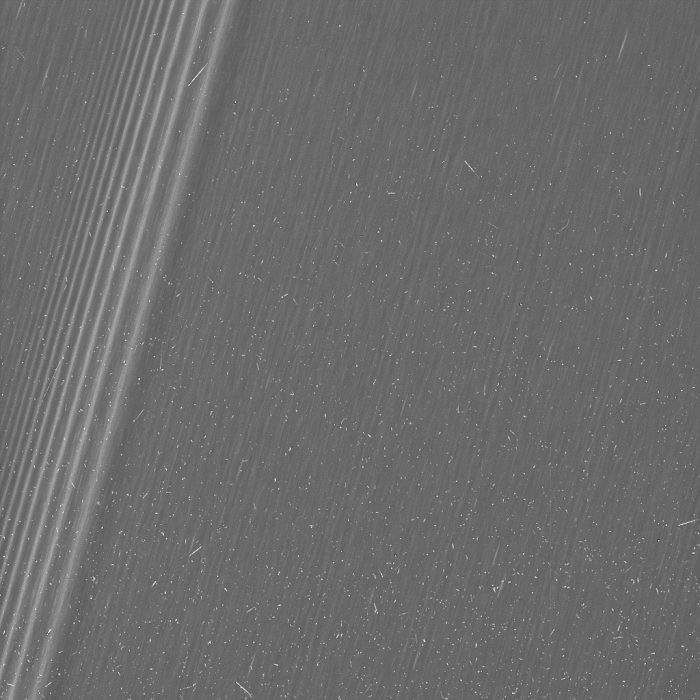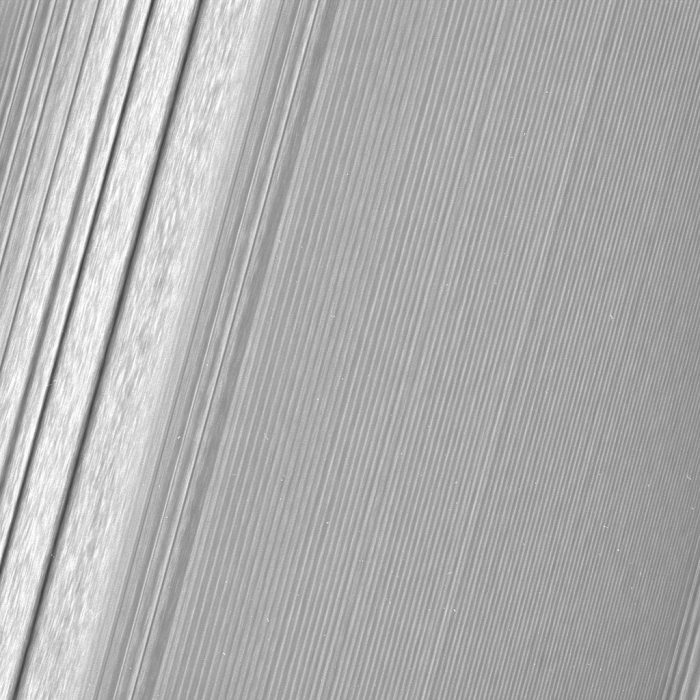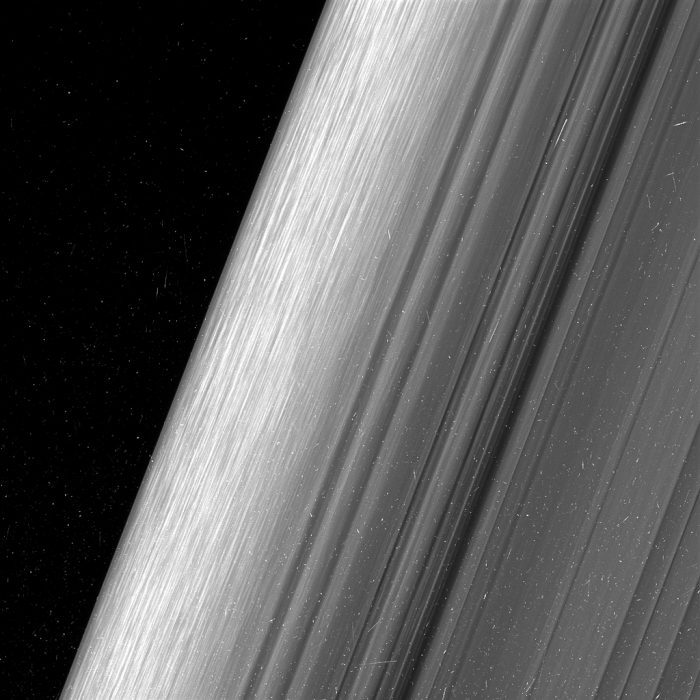Saturn's rings are one of the Solar System's great sights. These rapidly orbiting trails of ice, rock, and dust are what makes the planet instantly recognizable. And even though the other three gas giants (Jupiter, Uranus, and Neptune) all have rings of their own, there's no question which planet's are the most magnificent. First prize: Saturn!
That's why we're so excited about these brand new photos taken by NASA's Cassini probe. They reveal incredible details—twice as clear as any picture of Saturn's rings in the past.
Rings and moons and moonlets

This image of Saturn's rings is so detailed that you can see the white streaks created by cosmic rays and charged radiation as they fly toward the planet. Whoa! (NASA/JPL-Caltech/Space Science Institute)
Here on Earth, we have one moon. But Saturn? It has 62 moons! One of those moons, Titan, is larger than Mercury, has its own atmosphere, and even lakes of hydrocarbon. Plus there are hundreds of moonlets (think baby moons), as well as those stunning rings. That's a lot to take in—and Cassini is proving that we didn't even know the half of it. Compare these pictures:
(Getty Embed)
This is Saturn as seen in 1998 by the Voyager space probe. The rings look fairly wide and solid from this distance. And everything inside the rings appears to move in perfectly parallel orbits. But now, thanks to Cassini, we can take a closer look. And what do we see?

(NASA/JPL-Caltech/Space Science Institute)
The rings are full of waves, motion, and tiny features. In particular, there is the phenomenon scientists call "straw." Those are the waves that you see especially in the far left rings. It looks like smudges on the camera lens, but it's actually caused by particles in the ring clumping together as they orbit Saturn. Scientists believe that the gravity of several of Saturn's moons "tug" at the particles as they pass, making them wobble.
Nearing the end of its amazing mission
In 2010, Cassini gave us images of a massive storm on Saturn. (Getty Embed)
This may surprise you, but Cassini has actually been in orbit around Saturn for longer than some of you have been alive! It was launched in 1997 and reached Saturn on July 1, 2004. Since then, it has viewed the planet from every possible angle, discovered giant storms, sent a lander (Huygens) to Titan, catalogued dozens of moons and moonlets, and even taken a picture of Earth as seen from Saturn! But it is almost at the end of its mission.
Right now, it is in a "ring grazing" orbit stage. That's why we're getting such incredible shots of the rings themselves. On April 26, it will reach its "grand finale". This is when it will try a series of orbits in between the inner rings and the planet before it ends its mission. This will be the closest any craft has come to Saturn itself. What will Cassini see? We cannot wait to find out!
 These latest images of Saturn's rings are truly something special. (NASA/JPL-Caltech/Space Science Institute)
These latest images of Saturn's rings are truly something special. (NASA/JPL-Caltech/Space Science Institute)










Cool 😀
🙂 Amazing! Thank you.